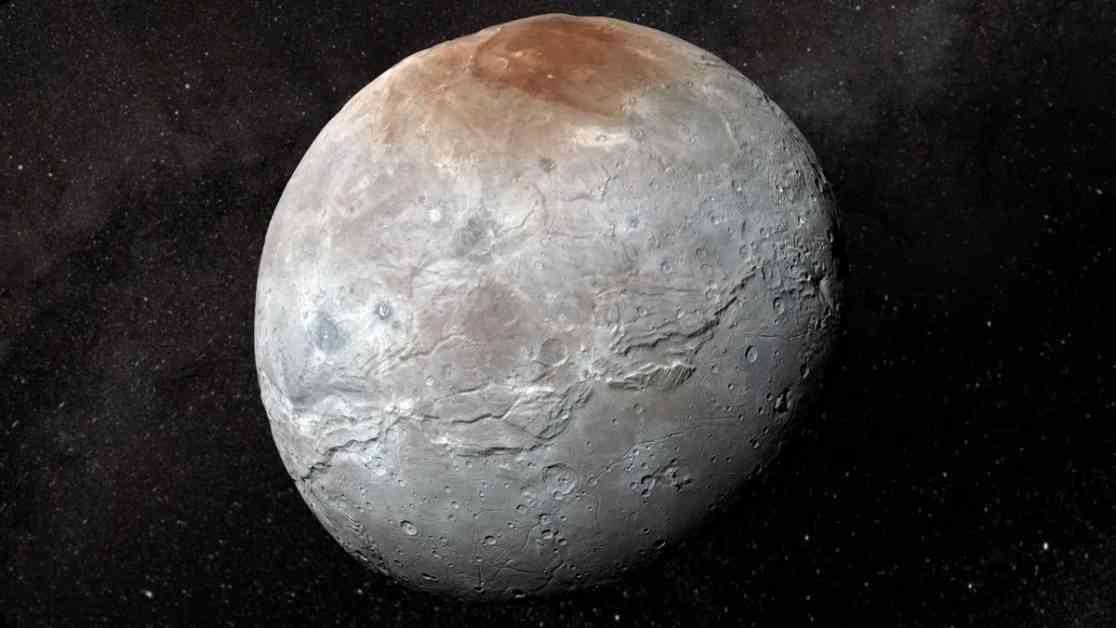Pluto’s moon Charon has been a subject of interest for astronomers for decades, and recent findings using the James Webb Space Telescope (JWST) have provided new insights into its composition. Astronomers have discovered carbon dioxide and hydrogen peroxide on the frozen surface of Charon, shedding light on the moon’s origins and evolution.
Previous studies of Charon have been limited in terms of the wavelengths of light that could be explored, leaving gaps in our understanding of its surface composition. While water ice, ammonia-bearing species, and organic compounds have been detected on Charon before, carbon dioxide and hydrogen peroxide were recently found for the first time.
The team led by Silvia Protopapa of the Southwest Research Institute (SwRI) used the JWST’s Near-Infrared Spectrograph (NIRSpec) instrument to study Charon’s surface in more detail. The presence of carbon dioxide and hydrogen peroxide on Charon suggests evidence of its formation and irradiation processes, expanding our knowledge of the moon’s compositional inventory.
Charon, located in the Kuiper Belt at the solar system’s edge, offers valuable insights into the effects of sunlight exposure and cratering on icy bodies like itself. With its surface not obscured by volatile ices like methane, Charon provides a unique opportunity to study these distant bodies and understand how processes like sunlight exposure and cratering shape their surfaces.
The detection of carbon dioxide and hydrogen peroxide on Charon has been an exciting discovery for scientists. Carbon dioxide is believed to have originated from the moon’s interior and has been exposed to the surface through cratering events. Its presence confirms previous expectations based on the region of the protoplanetary disk from which the Pluto system formed.
On the other hand, the unexpected detection of hydrogen peroxide on Charon has raised new questions about the moon’s surface processes. The presence of hydrogen peroxide suggests active alteration by ultraviolet light from the sun, energetic particles from the solar wind, and galactic cosmic rays. This surprising finding has led scientists to compare Charon to Jupiter’s moon Europa, where hydrogen peroxide has been known to exist.
The team’s research, published in the journal Nature Communications, represents an important step in understanding Charon’s composition and its role in the larger context of icy bodies beyond Neptune’s orbit. Future observations using the JWST will continue to explore Charon’s surface and expand our knowledge of these distant and intriguing worlds.
In conclusion, the recent findings on Pluto’s moon Charon have provided valuable insights into its origins and evolution. By studying the moon’s composition and surface processes, scientists are gaining a better understanding of how icy bodies like Charon are formed and shaped in the outer reaches of our solar system. The ongoing research using the JWST promises to unveil more secrets about Charon and other mid-sized icy bodies, opening new doors to the mysteries of our cosmic neighborhood.










